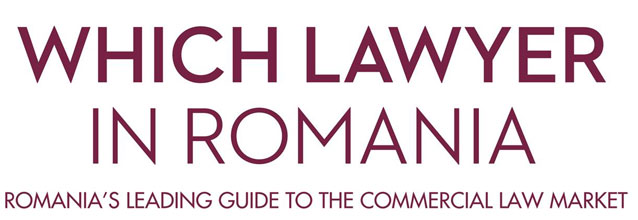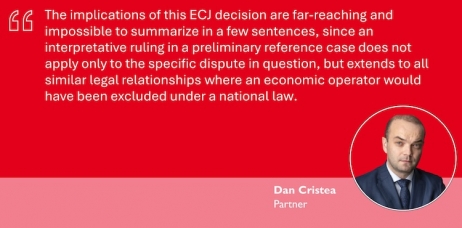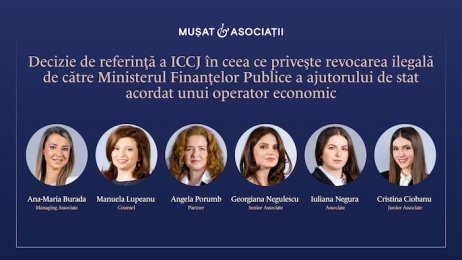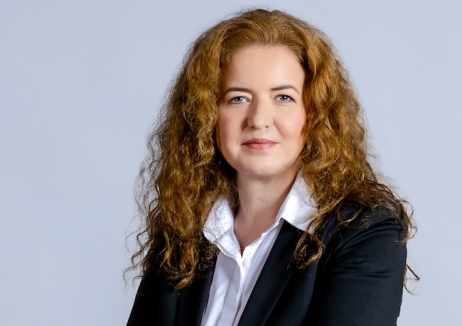
While the economic recession has shadowed the
development of several sectors of the domestic economy and, consequently, has
affected the activity of law firms in terms of consultancy, disputes, which
have flourished in those troubled times, have continued blooming in recent
years.
Probably the sole practice area that lawyers cannot complain about, litigation, has seen great effervescence over the past years, having a major contribution to the increase of the revenues posted by law firms. This trend will be maintained, at least in 2014, hence confirming that “in general, dispute resolution is a safe haven for law firms in times of economic distress”, as Robert Rosu, Partner of Tuca Zbarcea & Asociatii, says.
It is not very encouraging for the business environment, but the overall prudent approach which has fallen upon Romania’s economy is seen in how disputes are handled, too, as the parties involved prefer to resort to the courts instead of settling issues amicably.

The upward tendency is unanimously confirmed, Liviu Gheorghe, Partner at SCA Jinga & Asociatii noticing that in spite of a slowdown recorded in the investment field, disputes continued to expand in 2013: “Clients were more interested in securing assets and making use of their own receivables instead of launching new projects”, he says.
According to Sebastian Gutiu, Managing Partner of Schoenherr & Asociatii, the higher number of cases is explained by a lower appetite for making concessions for settling disputes, the parties involved having a penchant for litigation. “Debts, cash shortage, the risk of insolvencies are factors that generate the growth, which is visible in 2014, too”.
While in the previous years the vast majority of litigation concerned debt recovery, foreclosure matters, as well as insolvency proceedings, the areas of litigation are going through a diversification process, explains Liviu Gheorghe: “During 2013 we have witnessed numerous disputes on segments such as public procurement, tax and even intellectual property”.
Even so, insolvency matters or debt recovery, some of the market’s most offering areas in terms of the volumes of cases recorded in the previous years, remain important sources for the activity of law firms in Romania.
“Insolvency/recovery practice had the biggest growth”, says Robert Rosu, Partner of Tuca Zbarcea & Asociatii, adding that “this trend will probably continue on the short term, considering that banks in particular are more determined to pursue recovery/insolvency proceedings. Amongst the hottest legal practice areas today are commercial disputes, administrative claims (public procurement, competition, fiscal claims, structural funds) and insolvency, bankruptcy or winding-up cases.”
Gelu Maravela, Managing Partner of Maravela & Asociatii, another law firm whose litigation department has been busy in the past years, describes their situation: “As far as we are concerned, the disputes we are handling are more or less equal in terms of volume per each area of expertise (commercial disputes, insolvency, labor disputes, intellectual property litigation, disputes arising from public procurement procedures, white collar crime, etc.), though money laundering and tax evasion litigation seem to become a palpable trend”.
Also, Cristiana I. Stoica, Founding Partner of Stoica & Asociatii enumerates the disputes brought about by the performance of contractual obligations, insolvencies and IP contentious matters as the most common sources of litigation. “The highlights of the past year were the clawback cases and the litigation from the competition law area”, she says.
“We could notice an increasing trend last year, with areas such as insolvency and criminal fiscal litigation profiling to be the main triggers of an approximately 10 percent increase in the volume of work last year”, mentions Oana Partenie, Managing Associate at NNDKP. Apart from insolvency, she says they focus on consumer protection and construction and infrastructure, namely important infrastructure projects that required assistance and representation following the advice on FIDIC contracts by public procurement procedures, going on explaining that “the criminal fiscal litigation is another critical aspect that is gradually becoming a ‘trend’ on the market, judging by the volume of activity and the mixed litigation and fiscal consultancy teams it involves”.

While litigation cases stay on an upward trend, the legislative changes performed last year with respect to dispute resolution are yet to take visible effect. Thus, although the New Civil Procedure Code is meant to reduce the duration of dispute resolution, and obviously to increase the amount of closed litigation cases, the rate of disputes eventually resolved has not seen the expected improvement, the Romanian courts still being overloaded with such files.
“It is inevitable that the duration of resolution and complications arising from litigation exist, as long as the courts are overloaded with files”, says Dr. Cosmin Vasile, Managing Partner of Zamfirescu Racoti & Partners.
Except for some courts across the country, the general situation is the one described by Dr. Cosmin Vasile, as the New Civil Procedure Code effective since last year has limited effects at market level, market which remains reserved about the evolution predicted for the coming period.
“At the moment we are in a transition period of time when simple things are not applied in a consistent way because the code is pretty new, the interpretations vary, because the jurisprudence on the new procedure code is very limited. Sometimes we prefer to suggest to our clients, especially in commercial transactions, to move the jurisdiction to other places, because the cases are not judged in a consistent way by ordinary courts in Romania”, says Boiana Berchi, Partner in charge of Bucharest office, McGregor & Partners.
On the other hand, an architect of the present situation is the fact that the mediation process which was introduced for preventing litigation is not treated properly by the parties involved in disputes, being seen only as a formality rather than something to be used to prevent litigation, she explains further. “I hope that in a few years we can speak of real mediation aiming at stopping parties to go to court and settling the dispute before it goes too far, and not just at completing this step, where in the end 90 percent of the cases go to court anyway, as it happens nowadays”, Berchi adds.
There are some bases for the current circumstances to change, though, and a positive signal in this respect was the second half of the previous year when the beneficial effects, although not significant, emerged, according to Liviu Gheorghe, Partner at SCA Jinga & Asociatii.“Both the courts and litigants have succeeded to make use of and benefit from these legislative changes, leading to a growth of the number of cases resolved by the courts”, he says, anticipating a similar development for this year, too.
Leaving aside this encouraging aspect, corruption is still an issue within the Romanian courts, such cases revealed recently causing concern amongst the business community, points out Daniela Nemoianu, Managing Partner of NTMO Attorneys at Law: “Litigation cases can be lengthy, full of surprises and altered by external influences. Let’s not forget that Romania no longer has a valid choice for a local arbitration court, a fact that drags investors to other jurisdictions. The judicial system is still to be modernized in terms of processes, quality of judgments, integrity and mentality”.



 September 29, 2014 10:05
September 29, 2014 10:05 










